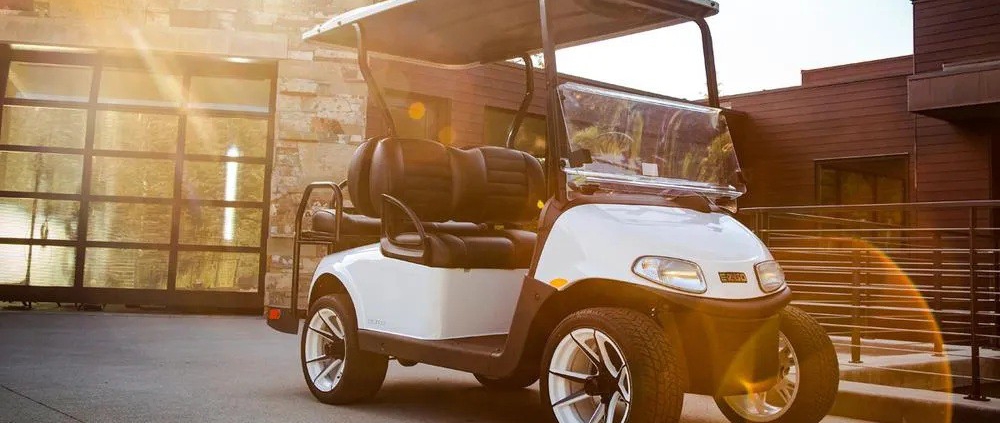Replacing Golf Cart Batteries with Lithium: What You Need to Know Before Upgrading Your System
As more golf cart owners and fleet operators explore lithium battery options, the demand for high-performance, U.S.-based battery providers is growing rapidly. If you’re seeking trusted lithium battery suppliers USA with proven expertise and a broad application range, it’s important to start your research with companies that offer both product depth and technical guidance.
Upgrading your golf cart from lead-acid to lithium batteries is no longer a fringe trend—it’s becoming the standard for both personal users and fleet operators. Whether you’re looking for longer range, faster charging, or less maintenance, lithium batteries deliver measurable advantages over traditional power systems.
But upgrading your golf cart’s batteries isn’t always as simple as swapping out one battery pack for another—especially if you’re changing the system voltage or increasing the capacity. This guide breaks down what you need to know before replacing your golf cart batteries with lithium, including system compatibility, upgrade paths, and common pitfalls to avoid.
Why Replace Golf Cart Batteries with Lithium?
Before diving into the technical aspects, let’s quickly review why lithium batteries have become the go-to upgrade:
- Lighter weight: Up to 70% lighter than lead-acid batteries, improving acceleration and reducing wear on components.
- Longer lifespan: 5–10 years of service with up to 3,000+ cycles depending on usage.
- Faster charging: Full charge in 2–3 hours vs. 8+ hours for lead-acid.
- No maintenance: No watering or corrosion to worry about.
- Consistent performance: Full voltage delivery until the battery is nearly empty.
For buyers seeking reliable, long-lasting performance, lithium offers a compelling return on investment.
Upgrading Isn’t Just About Voltage: What “Battery Upgrade” Really Means
Many users associate upgrading batteries with “going from 36V to 48V,” but that’s only part of the story. A battery upgrade can involve:
- Voltage changes (e.g., 36V → 48V or 48V → 72V)
- Technology upgrades (e.g., lead-acid → LiFePO₄ lithium)
- Capacity increases (e.g., 100Ah → 150Ah for longer range)
- Smart features (e.g., Bluetooth BMS, advanced protection systems)
Understanding which type of upgrade you’re performing is crucial for compatibility and safety.
Core Factors to Consider Before Replacing Batteries
When switching to lithium—regardless of voltage—you’ll need to evaluate the entire vehicle system. Here are the most important factors:
- Controller Compatibility
The motor controller governs how power is delivered.
- If you’re changing voltage (e.g., from 36V to 48V), you’ll likely need a new controller or confirm your current one is multi-voltage compatible.
- Overvolting a non-rated controller can lead to performance issues or permanent damage.
- Motor Support
Most DC motors used in golf carts can handle slightly higher voltages, but:
- Check manufacturer specs to avoid overheating or premature wear.
- For large voltage upgrades (48V → 72V), consider upgrading the motor.
- Charger Replacement
Lithium batteries require lithium-compatible smart chargers.
- Never use a lead-acid charger on lithium—it may undercharge, overcharge, or damage the pack.
- Many lithium kits come with matched chargers—always use what the manufacturer recommends.
- Wiring and Connectors
Higher voltage and current require proper gauge cabling, secure connections, and potentially new fuses or relays.
- Improper wiring can lead to overheating or electrical faults.
- Consult a professional if unsure about the safe handling of high-current connections.
- DC-DC Converter
If your cart runs accessories like lights or a radio, make sure your DC-DC converter supports the new voltage.
- A converter takes your main battery voltage (48V, 72V) and steps it down to 12V for auxiliary electronics.
- Replacing this component is often overlooked but critical.
Should You Upgrade Voltage?
One of the most common questions is whether to increase system voltage when switching to lithium. Here’s a breakdown:
| Upgrade Type | Benefits | Considerations |
| 36V → 48V | Better torque, improved speed, improved hill climbing | May require new controller, charger, wiring |
| 48V → 72V | Even greater performance gains for off-road or heavy carts | Demands upgraded motor, controller, higher safety standards |
| Stay at 36V or 48V | Easiest install, avoids component replacement | May not unlock full lithium potential in performance |
For most users, upgrading from 36V to 48V strikes a good balance between performance and cost. However, make sure all components (controller, charger, motor) are compatible before increasing voltage.
Example Scenarios
✅ Scenario 1: Simple Lead-Acid to Lithium Swap (Same Voltage)
- 48V lead-acid → 48V lithium
- Replace batteries and charger only
- Fastest and easiest transition
✅ Scenario 2: Full Voltage Upgrade
- 36V lead-acid → 48V lithium
- Requires new controller, charger, and possibly wiring updates
- Performance improvement noticeable
✅ Scenario 3: Smart Feature Upgrade
- 48V lithium → 48V lithium with Bluetooth monitoring
- Replace with smart BMS model
- Great for fleet tracking or personal data insight
Other Upgrade Considerations
- Battery Fitment & Mounting: Will the new lithium pack physically fit your battery bay?
- Range Expectations: Lithium batteries deliver more usable capacity—e.g., 48V 105Ah lithium ≈ 6×8V lead-acid batteries in range.
- Warranty and Safety Certifications: Look for UL, UN38.3, or CE certifications for peace of mind.
- Charging Infrastructure: Consider whether shared fleet charging stations need upgrades.
Choosing the Right Lithium Battery Model
While this article covers the upgrade process and system compatibility, selecting the right lithium battery model is equally important—especially when considering size, amp-hour capacity, and specific use case (personal vs. fleet use).
👉 For a deeper dive into battery selection, read our guide: Best Lithium Golf Cart Batteries: How to Choose What’s Right for You
It will help you compare different configurations, chemistries, and features to make the most informed purchase decision.
Where to Find Quality Lithium Battery Replacements
When you’re ready to upgrade, choosing a trusted supplier is key. Look for:
- Proven track record with golf cart applications
- U.S.-based technical support
- Smart BMS integration
- Flexible configuration options (voltage, capacity, form factor)
One reliable option is Leoch Lithium’s Golf Cart Battery lineup, which offers a range of high-performance lithium options with advanced battery management systems and modular stackability—ideal for everything from individual use to full fleet deployment.
Final Thoughts
Switching to lithium is more than just a battery change—it’s an upgrade to your entire power system. Whether you’re increasing voltage, upgrading capacity, or simply replacing old batteries with maintenance-free lithium, the key is understanding how your cart’s electrical system works as a whole.
By reviewing controller specs, motor limits, charging compatibility, and accessory voltage needs, you’ll ensure your transition to lithium is smooth, safe, and performance-enhancing.
For both personal users and fleet managers, replacing golf cart batteries with lithium is an investment that pays off in reliability, efficiency, and long-term cost savings. Take the time to plan your upgrade carefully, and your cart will reward you with years of improved performance.


